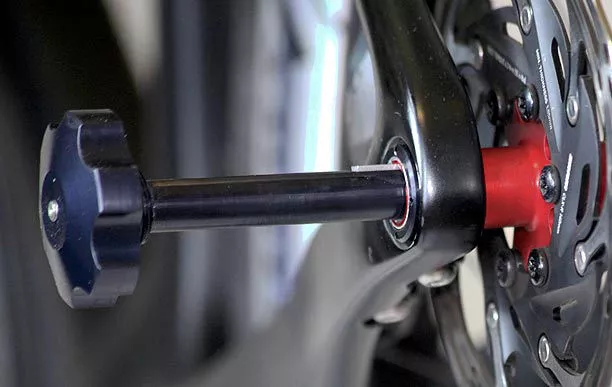Removing and reinstalling a bike's rear wheel can be quite a laborious, frustrating process, as you have to wrangle the chain, derailleur and (if applicable) the disc brake. The new Fasten system, however, allows the wheel to quickly drop straight down out of the frame.
On most existing bikes, removal of the rear wheel involves shifting the chain to the smallest cog on the cassette, releasing the axle's quick release or yanking out the thru-axle, pulling the derailleur back out of the way, then pounding down on the wheel until it falls out. Putting it back in requires doing all of those steps in reverse, along with guiding the brake rotor to sit between the callipers.
Designed by French startup Lagar Concept, the Fasten system is intended to make things much easier. It incorporates a setup in which the cassette remains attached to the frame on the drive side, while the brake rotor remains attached on the other. The bearings are contained within housings in each of those units, not within the wheel.
This arrangement allows the wheel to have quite a simple, narrow hub, which slots into place between brackets on the inside ends of the cassette and brake rotor assemblies. Running through the setup from one side to the other is a thru-axle, which tightens everything down and locks it all together.
As a result, removal of the wheel involves simply loosening off the thru-axle and pulling it out, then allowing the wheel to drop out of the frame – the chain, derailleur and brake can be left alone. Putting it back in is just as simple.

As an added bonus, if the Fasten system is also being used in front, the front and rear wheels can be swapped back and forth – neither one is front- or rear-specific. Additionally, because the thru-axle doesn't have to be pulled completely out of the frame for wheel removal, there's no chance of losing it or dropping it in the dirt.
There's currently no word on how the weight of the system compares to that of a conventional setup, nor on when it might reach production. It should be noted, though, that Fasten would have to be built into bicycles by their manufacturers – it couldn't be retrofitted onto existing bikes. That said, Lagar Concept is promoting the notion that the technology could allow bicycle companies to pursue new types of transmissions or brakes, as long as they adopted Fasten as a wheel standard ... and the system did recently win an award at the Eurobike show.
You can see Fasten in use, in the video below.
The somewhat similar HubDock system, which we covered eight years ago, never reached its Kickstarter funding goal.
Source: Lagar Concept via Pinkbike





